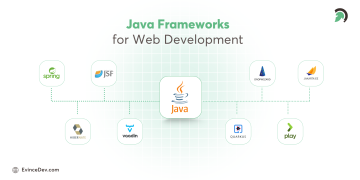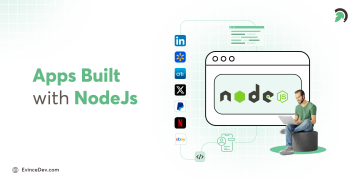In today’s digital-first world, businesses increasingly turn to web app development to meet their operational needs, engage customers, and streamline services. Whether you’re a start-up looking to build a new digital product or an established company aiming to scale your operations, ultimately, web applications offer a versatile solution. This comprehensive guide will walk you through the essentials of web application development, including the key stages, technologies involved, and best practices to ensure the success of your web app. By the end of this blog, you’ll have a solid understanding of web apps, ideas to inspire your project, and insight into how to get started with custom web application development.
What is Web App Development?
Web app development refers to building interactive programs that reside on remote servers and are delivered to users through web browsers. Unlike traditional desktop applications that must be installed on individual computers, web apps are accessible via the Internet, making them more convenient for users across devices. The flexibility and scalability of web apps make them ideal for businesses of all sizes, from e-commerce stores to enterprise-level management systems. When considering web application project ideas, focusing on solutions that improve user experience, streamline operations, and drive business growth is essential.
- In 2024, the global web application development market is anticipated to reach $179.90 billion, according to a report from Statista.
Web Applications vs Websites: Key Differences
Web applications are interactive software that allows users to perform tasks, such as data entry or purchases, within a web browser. Furthermore, they are typically dynamic, responding to user input and enabling personalized experiences.
Conversely, a website is generally static and designed to deliver content like text, images, or videos for informational purposes. While websites focus more on displaying content, web applications prioritize user interaction. Websites are more accessible to develop and maintain, whereas web applications require more complex development and real-time data processing capabilities. Both serve different business needs depending on the goals.
Why Should You Consider Web Application Development?
With the increasing demand for digital experiences, web applications have become essential tools for businesses looking to:
- Reach a broader audience: Web apps can be accessed from anywhere worldwide, as long as there’s an internet connection.
- Enhance user experience: Web apps are designed for usability, offering seamless interactions and accessibility across devices.
- Streamline operations: With custom web application development, businesses can automate processes, manage resources, and improve productivity.
Types of Web Applications
Before diving into web application development, it’s crucial to understand the various types of web apps. Here’s a breakdown of some of the most common types:
- Static web apps deliver content directly to the user’s browser without much interactivity. They are often used for basic informational websites or portfolios.
- Dynamic Web Apps: Dynamic apps interact with users in real-time, delivering customized content based on user input. Social media platforms, e-commerce sites, and customer portals often fall into this category.
- Single-Page Applications (SPAs): SPAs load a single HTML page and dynamically update as the user interacts with the app, providing a smoother user experience without frequent page reloads. Gmail and Google Maps are famous examples of SPAs.
- Progressive Web Apps (PWAs): PWAs combine the best web and mobile apps, offering offline functionality, push notifications, and faster loading times. They are ideal for businesses that want to provide an app-like experience without building a native mobile app.
- E-commerce Web Apps: These are designed specifically for online selling and are built with features like product listings, payment gateways, and user accounts.
Importance of Web Application Development
Web application development is crucial in today’s digital landscape, helping businesses streamline operations and improve customer engagement. Here’s why it’s essential:
- Accessibility: Web apps are accessible from any device with an internet connection, offering flexibility for users.
- Scalability: They can scale easily to accommodate growing business needs and increased traffic without major overhauls.
- Enhanced User Experience: Custom web apps provide interactive, user-friendly experiences tailored to specific business needs.
- Cost-Effective: Compared to native apps, web apps require less development time and can work across multiple platforms.
- Automation: They automate business processes, improving efficiency and reducing manual effort.
Key Steps in Web Application Development
Developing a web app involves multiple stages, each of which is critical to the project’s success. Here’s a step-by-step breakdown of the web app development process:
1. Identify Your Web App Idea
The first step in developing a web app is identifying the problem you want to solve or the value you want to offer. Whether it’s improving operational efficiency, enhancing customer experience, or enabling online transactions, clearly defining the purpose of your web app is essential.
Examples of web app ideas include:
- An employee management system for remote teams
- A fitness-tracking app that integrates with wearable devices
- A custom customer support portal for your business
2. Market Research and Validation
Once you have your web app idea, validating it through market research is essential. This involves understanding your target audience, identifying competitors, and evaluating the potential demand for your app. Market research helps you refine your idea, ensuring it meets the needs of your intended users.
3. Define Features and Functionalities
After validation, the next step is to list the features and functionalities your app will need. Some key features to consider for your web app development project are:
- User authentication (login/logout system)
- Database integration (to store and retrieve user data)
- Real-time notifications (to alert users of updates or changes)
- Payment gateways (if your app involves transactions)
- Responsive design (so that it works well on all devices)
Prioritize features that will directly benefit your users. Collaborating with a reliable web application development services provider can help you map out the technical aspects of these features.
4. Choose the Right Tech Stack
Selecting the appropriate tech stack is a critical step in web application development. The tech stack consists of the programming languages, frameworks, and tools you will use to build the app. Some popular tech stacks include:
- Frontend: HTML, CSS, JavaScript (with frameworks like React, Angular, or Vue.js)
- Backend: Node.js, Python (with frameworks like Django or Flask), or Ruby on Rails
- Databases: MySQL, PostgreSQL, or MongoDB for storing data
- Server: Nginx, Apache, or cloud services like AWS, Azure, or Google Cloud
Choosing the right tech stack depends on your app’s specific requirements, scalability needs, and budget.
5. Develop the Web Application
After your tech stack is in place, it’s time to begin development. This process involves coding the app’s front end (client-side) and back end (server-side). Collaboration between frontend and backend developers is crucial to ensure the app’s interface and functionality work seamlessly.
Key steps in the development phase include:
- Frontend Development: Building the user interface and ensuring responsive design.
- Backend Development: Setting up servers, databases, and APIs for data storage and retrieval.
- Testing: Rigorous testing is essential to identify bugs, optimize performance, and ensure the app works as intended across different devices and browsers.
6. Launch and Deployment
After successful development and testing, it’s time to deploy the app. This involves publishing the app on web servers and ensuring it is accessible to users. Launching your web app isn’t the end; continuous monitoring and updates will be required to ensure smooth operation and scalability as your user base grows.
Best Practices for Web App Development
To maximize the effectiveness of your web app, follow these best practices throughout the development process:
- Focus on User Experience (UX): Ensure the app is intuitive and easy to use.
- Optimize for Performance: Slow load times can drive users away. Ensure that your app is optimized for speed and efficiency.
- Mobile-First Design: With more users accessing web apps on mobile devices, ensure your app is responsive and mobile-friendly.
- Implement Robust Security Measures: Protect user data using SSL, encryption, and secure authentication protocols.
- Scalability: As your business grows, your web app should be able to handle increased traffic and more complex functionalities.
7. Web Application Maintenance and Support
Developing a web app doesn’t end at the launch. Maintenance and support are critical to ensuring the app remains functional, secure, and up-to-date with the latest technologies.
Key areas of maintenance include:
- Bug fixes: Addressing any issues that arise after launch.
- Performance monitoring: Continuously monitoring speed and server performance.
- Security updates: Regularly updating security protocols to protect against emerging threats.
- Feature upgrades: Adding new features based on user feedback and changing business needs.
Benefits of Custom Web Application Development
Moreover, custom web app development offers tailored solutions, unlike off-the-shelf software lacking flexibility or features. Here’s why custom development can be beneficial:
- Tailored solutions: Custom apps are built to address your unique business challenges.
- Scalability: A custom web app can grow and evolve with your business.
- Enhanced Security: Built-in robust security measures protect your data and mitigate risks tailored to your business’s specific needs.
- Improved Performance: Custom apps are optimized for your unique workflows, leading to better speed and efficiency.
- Competitive Advantage: Having a solution specifically for your business gives you a competitive edge over those using off-the-shelf software.
- Future-Proofing: Custom apps allow for easy updates and feature enhancements, keeping your business agile and adaptable.
Partnering with a Web Application Development Company
Whether you’re looking to build a new web app from scratch or enhance an existing one, partnering with a skilled web application development company like EvinceDev is crucial. Their professional team will help you identify the best technologies, guide you through development, and ensure your app is optimized for performance and scalability.
The key to success lies in creating a web app that meets the technical requirements and delivers real user value. By working with EvinceDev and integrating best practices, your web app can become a powerful tool to help you achieve your business goals.






